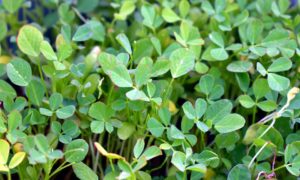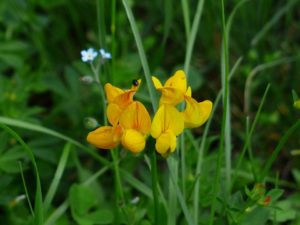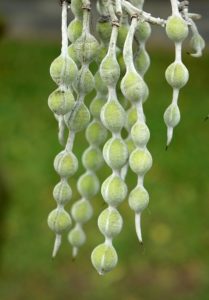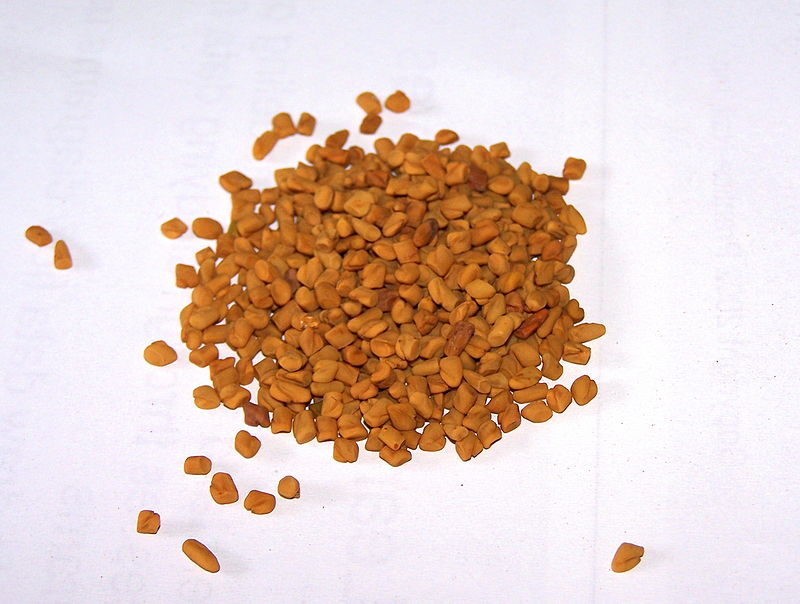
Fenugreek Plants
Fenugreek (Trigonella foenum-graecum) is an annual plant, related to peas and beans, that is native to the Near East. It has been in use for thousands of years and has spread from its original home to southeast Asia, especially India, where it has become an integral part of the cuisine. The seeds are used to flavor chutneys, curry and pickles. The leaves are used in some curries.
In ancient times, the Romans used fenugreek to flavor their wines. In modern times, the leaves are used in Persian cuisine, while the seeds are used in Turkish, Egyptian and Ethiopian dishes.

Fenugreek Flowers
Fenugreek is used medicinally although it can be dangerous. Traditionally it was used to treat diabetes by reducing blood sugar levels. It has also been used to promote digestion and induce labor. Modern medical research has determined that the use of fenugreek can interfere with the efficacy of anticoagulants, negatively affect the fertility of both men and women, cause birth defects and is unsafe for women who have hormone sensitive cancers.
Because fenugreek is a legume, it can trigger reactions in people who are allergic to peanuts or chickpeas.
The plants require full sun and well-drained soil. They grow to 2 feet tall. The flowers are white or yellow. Bloomtime is mid-summer.

Fenugreek Pods
Fenugreek is grown from seed which can be direct sown in your garden in areas with growing seasons of 120 to 150 days. The rest of us start our seeds indoors 4 to 6 weeks before our last frost. Soak the seeds in warm water over night to soften the seed coat and facilitate germination. Then sow the seeds ¼ inch deep. Germination should occur within 7 to 10 days. Ideally you should plant your seeds in biodegradable pots such as peat pots that can be planted in your garden so that the roots are not disturbed when you transplant your seedlings after your last frost.
If direct sowing in your garden, plant the seeds ¼ inch deep in rows that are 4 inches apart. The soil should be at least 60⁰F. Colder soil will result in a delay in germination. When your seedlings reach 2 to 3 inches tall, thin them to 4 inches apart.
The seeds are ready for harvest when the pods have turned brown in the fall. Harvest the pods and then thresh them to release the seeds. Seeds should be stored in tightly covered containers in a dark, cool, dry location.

